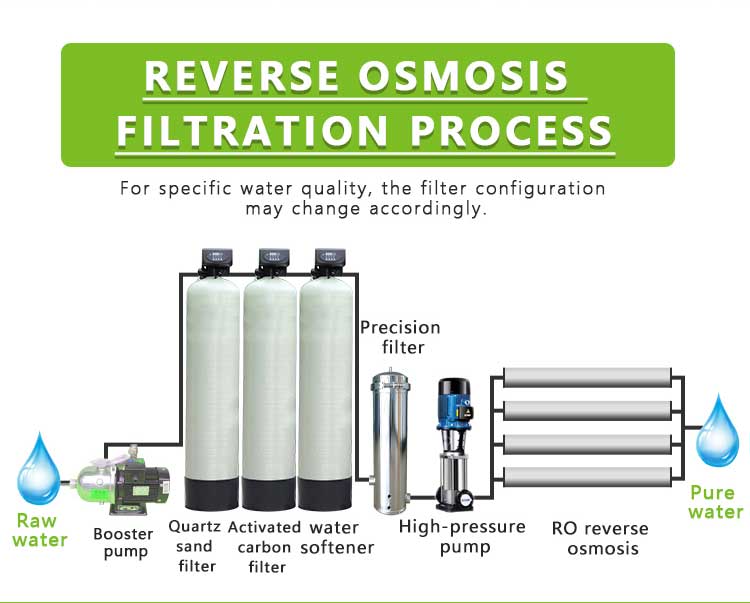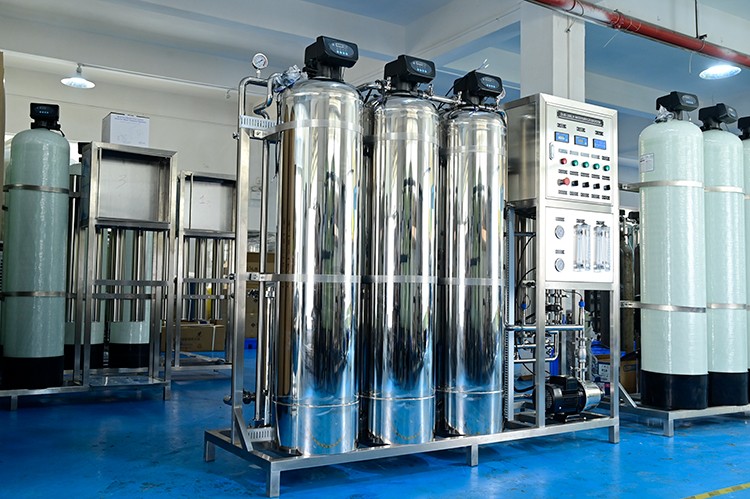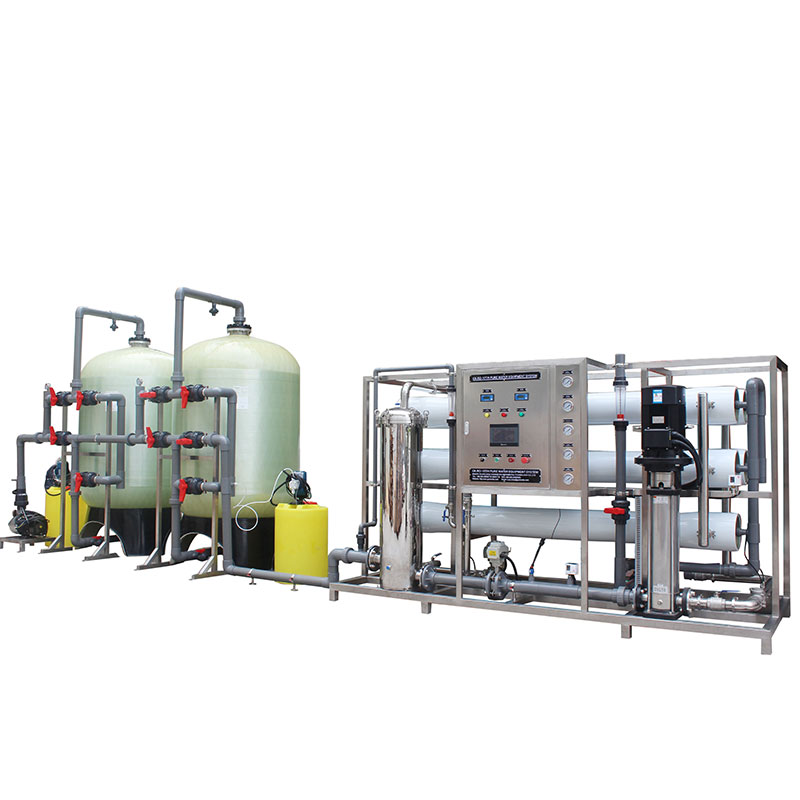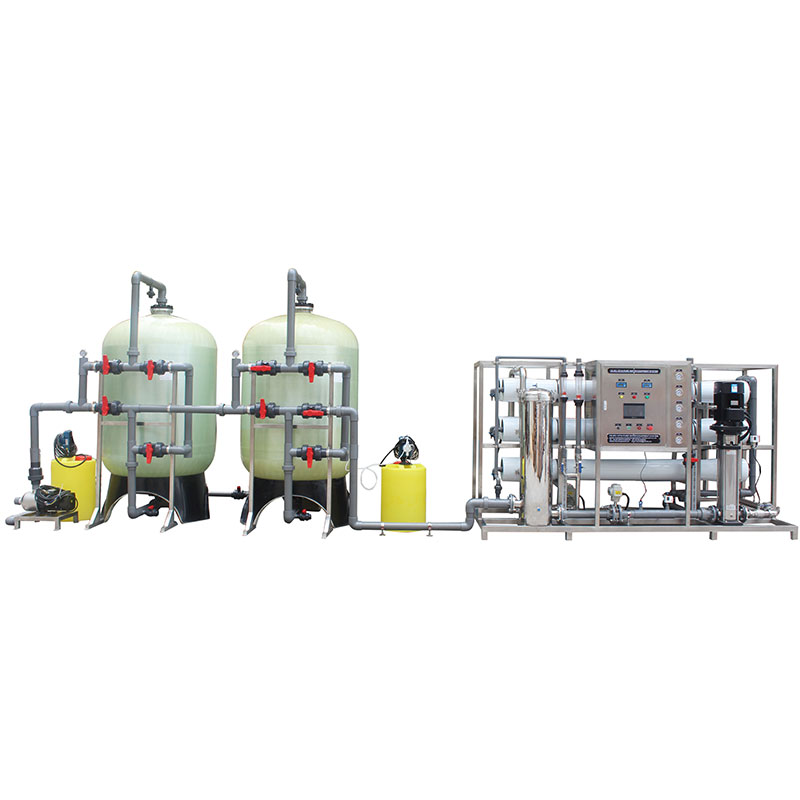¿Cómo tratar el agua potable de las aves de corral?
La avicultura es una parte importante de la agricultura, ya que proporciona una gran cantidad de carne y productos de huevo. Para garantizar el crecimiento saludable de las aves de corral, la calidad de losagua potablees crucial. Las bacterias, los virus, los parásitos, los metales pesados y otros contaminantes presentes en las fuentes de agua pueden suponer una amenaza para las aves de corral. Por lo tanto, la forma de tratar eficazmente el agua potable de las aves de corral se ha convertido en una cuestión clave que preocupa a los granjeros.
Entonces, ¿qué tipo de equipo es cómodo de usar y rentable? En este artículo analizaremos esta cuestión en detalle.

¿Cuál es la importancia del tratamiento del agua potable para las aves de corral?
La calidad deagua potable para aves de corralAfecta directamente a la salud y al rendimiento productivo de las aves de corral. Las fuentes de agua contaminadas pueden provocar que las aves de corral sufran diversas enfermedades, como infecciones intestinales, enfermedades respiratorias e incluso pueden propagar enfermedades infecciosas graves. Además, la mala calidad del agua también puede afectar al apetito de las aves de corral, lo que reduce la eficiencia de la producción. Por lo tanto, el tratamiento del agua potable de las aves de corral es una medida importante para garantizar la salud de las aves de corral.
¿Cuáles son las fuentes comunes de contaminación del agua potable de las aves de corral?
Los microorganismos como bacterias, virus, mohos y parásitos presentes en las fuentes de agua son las principales fuentes de contaminación del agua potable de las aves de corral. Estos microorganismos pueden causar infecciones a las aves de corral, especialmente en estaciones cálidas y entornos con alta humedad. El agua también puede contener contaminantes químicos como pesticidas, metales pesados (como plomo y mercurio) y nitrógeno amoniacal. Estas sustancias no solo son dañinas para las aves de corral, sino que también pueden ingresar al cuerpo humano a través de la cadena alimentaria y poner en peligro la salud humana.
Además, las sustancias orgánicas como el humus y los excrementos animales pueden contaminar las fuentes de agua, lo que provoca el deterioro de la calidad del agua y puede causar problemas gastrointestinales en las aves de corral. También existe el problema del agua dura. El alto contenido de minerales (como calcio y magnesio) en el agua aumenta la dureza del agua, lo que no solo afecta la calidad del agua potable de las aves de corral, sino que también puede causar incrustaciones y daños en los equipos de agua potable.

¿Cómo tratar el agua potable de las aves de corral?
Con el fin de garantizar la seguridad y calidad deagua potable para aves de corralLos siguientes son varios métodos comunes de tratamiento de agua:
Método de sedimentación:
La sedimentación es el método de tratamiento de agua más simple y es adecuado para tratar la materia en suspensión y las partículas más grandes en el agua. Algunas materias orgánicas y partículas inorgánicas se pueden eliminar mediante sedimentación natural o agregando floculantes (como alumbre) para acelerar el proceso de sedimentación.
Ventajas del método de sedimentación:
● Bajo costo y operación sencilla. ● Tiene cierto efecto en granjas que no requieren alta calidad de agua.
Desventajas del método de sedimentación:
● Sólo es adecuado para la eliminación de partículas gruesas y no puede eliminar microorganismos ni contaminantes solubles.
● El tiempo de sedimentación es largo y la eficiencia es baja.
Método de filtración:
El método de filtración elimina las partículas y la materia suspendida en el agua a través de barreras físicas (como filtros de arena, filtros de fibra, etc.). Los filtros de arena son los equipos de filtración más comunes, adecuados para eliminar partículas de mayor tamaño y algo de materia orgánica.
Ventajas del método de filtración:
● Puede eliminar eficazmente partículas suspendidas y limo.
● Operación y mantenimiento sencillos y una amplia gama de aplicaciones.
Desventajas del método de filtración:
● No puede eliminar contaminantes solubles ni microorganismos.
● El material del filtro debe reemplazarse periódicamente, lo que aumenta el costo de mantenimiento.
Desinfección ultravioleta:
La desinfección ultravioleta es un método de desinfección física eficaz. Mediante la irradiación ultravioleta se destruye el ADN de los microorganismos presentes en el agua, haciendo que pierdan su capacidad reproductiva, consiguiendo así el objetivo de la desinfección.
Ventajas de la desinfección ultravioleta:
● Esterilización de alta eficiencia, sin residuos químicos.
● El equipo es fácil de operar y no altera las propiedades físicas y químicas del agua.
Desventajas de la desinfección UV:
● Existen ciertos requisitos para la calidad del agua. Cuando hay demasiados sólidos suspendidos en el agua, el efecto de desinfección disminuirá.
● La inversión inicial del equipo es alta y es necesario reemplazar la lámpara periódicamente.
Desinfección con cloro:
La desinfección con cloro es el método químico de desinfección más común. Mata bacterias, virus y algas en el agua agregando cloro o hipoclorito de sodio al agua. Este método se usa ampliamente en granjas a gran escala y sistemas de suministro de agua municipales.
Ventajas de la desinfección con cloro:
● Buen efecto bactericida, adecuado para diversas calidades de agua.
● Bajo costo, adecuado para uso a gran escala.
Desventajas de la desinfección con cloro:
● Pueden producirse subproductos (como cloroformo) que son potencialmente dañinos para las aves de corral y los seres humanos.
● Se requieren equipos y técnicos especiales para operar.
Sistema de ósmosis inversa (OI):
El sistema de ósmosis inversa elimina sales disueltas, metales pesados, materia orgánica, etc. en el agua a través de una membrana semipermeable para proporcionar agua potable de alta pureza. Este sistema se utiliza ampliamente en el suministro de agua potable a hogares y en algunas granjas de alta demanda.
Ventajas del sistema de ósmosis inversa:
● Puede eliminar casi todos los contaminantes solubles y la calidad del agua es muy pura.
● Adecuado para entornos de cría de alta demanda.
Desventajas del sistema de ósmosis inversa:
● Mantenimiento de equipos de alto costo y complejidad.
● Baja tasa de producción de agua y gran descarga de aguas residuales.

¿Qué equipos son adecuados para el tratamiento del agua potable de las aves de corral?
Después de comprender los distintos métodos de tratamiento del agua, los agricultores deben elegir el equipo más adecuado según su situación real. A continuación, se ofrecen varias recomendaciones de equipos para el tratamiento del agua potable de las aves de corral:
Desinfección ultravioleta:
Para granjas de cierta escala, la desinfección ultravioleta es una opción ideal. Puede matar eficazmente los microorganismos patógenos en el agua y garantizar la higiene y seguridad del agua potable para aves de corral. Al mismo tiempo, la desinfección ultravioleta no cambiará el sabor ni las propiedades del agua, lo que es muy adecuado para entornos de cría con altos requisitos de calidad del agua.
Recomendaciones:
● Verifique periódicamente el estado de funcionamiento de la lámpara y reemplácela según el uso.
● Asegúrese de que el contenido de materia suspendida en el agua no sea alto para evitar afectar el efecto de desinfección.
Filtro de arena combinado con sistema de desinfección con cloro:
Si hay más materia en suspensión en la fuente de agua, puede utilizar un filtro de arena para realizar una filtración preliminar y luego utilizar un sistema de desinfección con cloro para la esterilización. Esta combinación puede eliminar eficazmente la mayoría de los contaminantes y el costo es relativamente bajo.
Recomendaciones:
● Limpie periódicamente el material filtrante del filtro de arena para garantizar el efecto de filtrado.
● Controlar la cantidad de cloro para evitar efectos adversos en las aves de corral.
Tanque de sedimentación simple combinado con equipo de filtración manual:
Para las pequeñas explotaciones o los agricultores con fondos limitados, se puede optar por un simple tanque de sedimentación combinado con un equipo de filtración manual. Aunque el efecto de tratamiento de este método no es tan bueno como los dos métodos anteriores, tiene ventajas evidentes en términos económicos.
Recomendaciones:
● Limpie periódicamente el tanque de sedimentación para evitar la acumulación de lodos.
● Los equipos de filtración manual deben ser fáciles de operar y mantener.

¿Qué equipo es el más conveniente y rentable?
Al elegirEquipo de tratamiento de agua potable para aves de corralLos agricultores deben elegir los métodos y equipos de tratamiento adecuados según el tipo y el contenido de contaminantes en la fuente de agua. Si hay muchos contaminantes en el agua y los tipos son complejos, se recomienda elegir un sistema de tratamiento de varias etapas. Las granjas de gran escala requieren equipos eficientes y altamente automatizados, mientras que las granjas pequeñas pueden elegir equipos manuales o semiautomáticos de menor costo.
Aunque los equipos de alta gama pueden proporcionar mejores resultados de tratamiento, su inversión inicial y los costos de mantenimiento también son más altos. Los agricultores deben encontrar un equilibrio entre el rendimiento y el costo del equipo y elegir la solución más rentable. Además, algunos equipos requieren operadores profesionales y personal de mantenimiento, mientras que otros son relativamente simples y fáciles de usar. Elija el tipo de equipo adecuado según la capacidad operativa real de la granja.
Conclusión
El tratamiento del agua potable de las aves de corral afecta directamente a la salud y la eficiencia de la producción de las aves de corral. La elección del equipo de tratamiento de agua adecuado es crucial para los granjeros. La desinfección ultravioleta, el filtro de arena combinado con un sistema de desinfección con cloro y el tanque de sedimentación simple combinado con un equipo de filtración manual son opciones comunes y efectivas.
Los agricultores deben elegir el equipo de tratamiento más adecuado según la situación real, considerar exhaustivamente factores como el grado de contaminación de la fuente de agua, la escala de cría, la rentabilidad y la operación y el mantenimiento, a fin de garantizar la seguridad del agua potable de las aves de corral y mejorar la eficiencia de la cría.






